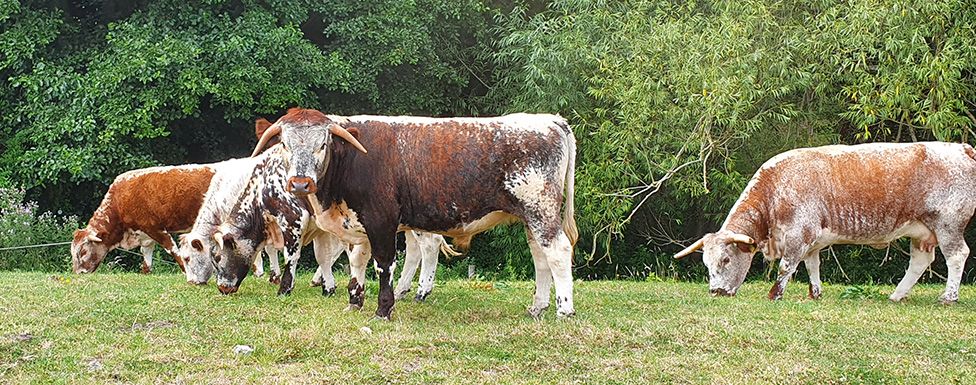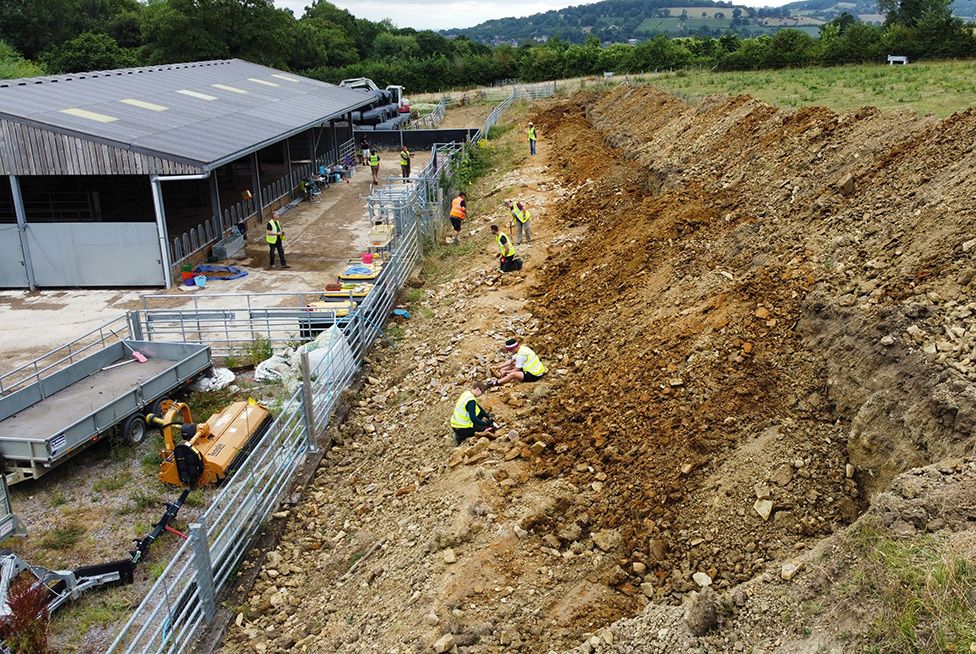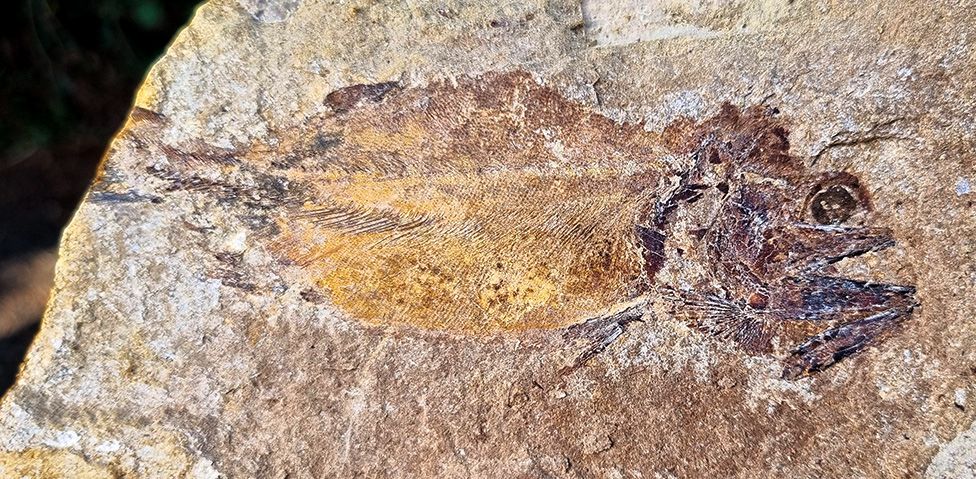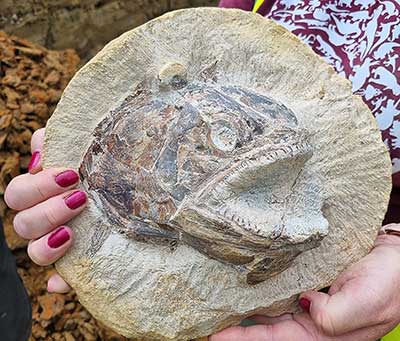©2021 Reporters Post24. All Rights Reserved.
A ferocious-looking fossil fish has been unearthed from a remarkable new Jurassic dig site just outside Stroud, in Gloucestershire.
The creature – a tuna-like predator called Pachycormus – is beautifully preserved in three dimensions.
With its big teeth and eyes, it gives the impression it is about to launch an attack.
The specimen was identified by prolific West Country fossil-hunters Neville and Sally Hollingworth.
“It was a real surprise because, when you find fossils, most of the time they’ve been pressed flat through pressure over time,” Neville told BBC News.
“But when we prepared this one, to reveal its bones bit by bit, it was amazing because we suddenly realised its skull was uncrushed.
“Its mouth is open – and it looks like it’s coming out at you from the rock.”
 IMAGE SOURCE,SALLY HOLLINGWORTH
IMAGE SOURCE,SALLY HOLLINGWORTH
The couple found the fish head in a grassy bank behind a cow shed in the village of Kings Stanley.
It had been encased in one of the many limestone nodules that were falling out from an exposed clay layer.
The landowner, Adam Knight, had no idea his English longhorn cattle were grazing on top of a rich fossil seam, recalling a time, 183 million years ago, when his farm would have been lying under warm tropical ocean waters.
Mr Knight gave permission to Neville and Sally, and a team led from the University of Manchester, to investigate the bank further.
A digger was brought in to extract hundreds more of the nodules, which were carefully cracked open to see what they held inside.
 IMAGE SOURCE,STEVE DEY
IMAGE SOURCE,STEVE DEYThe haul included more fish, squids and even the bones of two ichthyosaurs, hugely successful marine reptiles that looked a bit like a large dolphin.
“We’ve got the whole food chain,” palaeontologist Dean Lomax, from Manchester, said.
“So this Pachycormus would have been eating the smaller fish and squids.
“And then, the ichthyosaurs would have been eating the Pachycormus.”
Interestingly for a marine setting, there is also fossilised wood and insects in the clay layer, suggesting land was not that far away.
![3D]() IMAGE SOURCE,STEVEN DEY OF THINKSEE3D
IMAGE SOURCE,STEVEN DEY OF THINKSEE3D
There is particular interest because the specimens were extracted from a rare UK example of a time slice in the early Jurassic – the Toarcian Stage.
It is known for exceptional preservation, including of soft tissues, and the team has a fish, for example, in which it is possible to see the stomach contents.
“The last comparable exposure like this was the so-called Strawberry Bank Lagerstätte, in Somerset, in the 1800s – that got built over,” Sally said.
“The Court Farm site allows scientists to do modern research with fresh, in-situ material.”
 IMAGE SOURCE,DEAN LOMAX
IMAGE SOURCE,DEAN LOMAXThe Hollingworths are celebrated for their extraordinary ability to identify highly productive fossil locations.
They recently uncovered the remains of mammoths in the nearby Cotswold Water Park, featured in a BBC documentary fronted by Sir David Attenborough.
They also made headlines with the discovery of thousands of fossilised echinoderms – starfish, sea urchins and brittle stars – in a quarry in the north of the county.
“These sites tell you there are still many nationally and indeed internationally significant fossil discoveries yet to be made in the UK,” Dr Lomax said.
The intention is to stage a public display of the fossils at the Boho Bakery Café, which is very close to Court Farm, in October.



